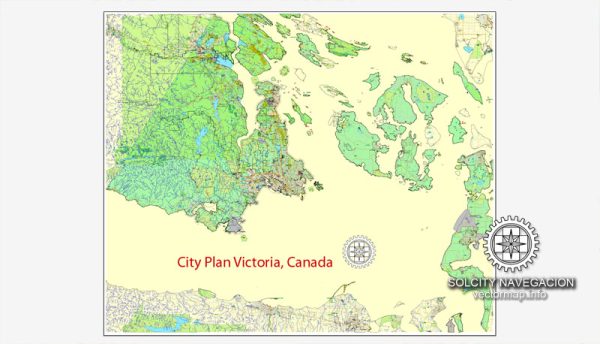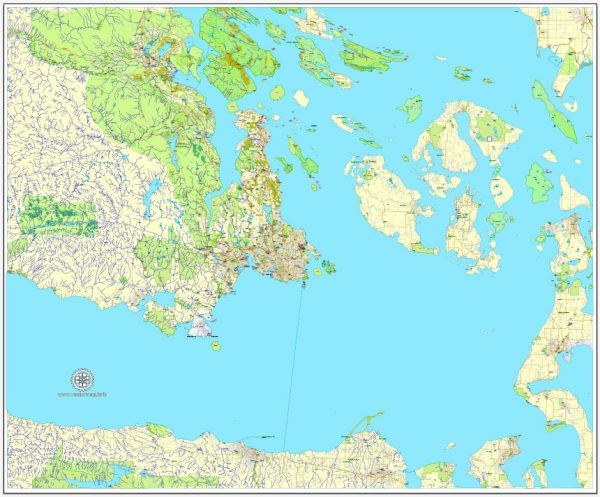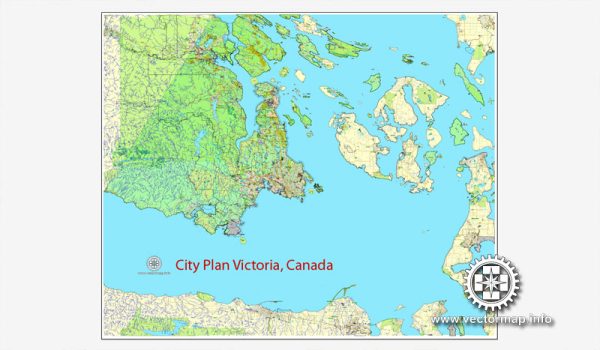Victoria is the capital city of the Canadian province of British Columbia and is located on Vancouver Island, off the southwestern coast of the mainland. The city is known for its stunning natural beauty, rich history, and vibrant urban development. Here’s a description of urban development in Victoria, Canada:
- Historic Charm: Victoria is renowned for its historic architecture and well-preserved heritage buildings. The city’s downtown area features a mix of historic structures, including grand Victorian-era buildings, Edwardian-style facades, and ornate government buildings. The Old Town and Inner Harbour areas are particularly notable for their historic charm.
- Compact and Walkable: Victoria’s urban development has focused on creating a compact and walkable city center. The city’s downtown is characterized by pedestrian-friendly streets, sidewalks, and bike lanes. This design promotes a sense of community and encourages residents and visitors to explore the city on foot.
- Sustainable Development: Victoria has made significant efforts to promote sustainability in its urban development. The city prioritizes public transportation, including buses and a downtown electric bike-sharing system. There’s also an emphasis on green spaces, parks, and waterfront areas to provide a connection with nature within the city.
- Mixed-Use Development: Victoria has seen a rise in mixed-use development projects that blend residential, commercial, and retail spaces. This approach helps create lively neighborhoods where people can live, work, and play, reducing the need for long commutes and promoting local businesses.
- Modern Infrastructure: Victoria boasts modern infrastructure, including state-of-the-art transportation systems and amenities. These improvements include the recent Johnson Street Bridge replacement and other infrastructure upgrades that aim to support the growing population and enhance the city’s connectivity.
- Housing Diversity: Victoria has experienced a growing demand for housing, which has led to various residential developments, from condominiums and apartment complexes to single-family homes. Efforts are made to address housing affordability concerns and provide a variety of housing options for residents.
- Cultural and Arts Scene: Victoria’s urban development includes the support and growth of its cultural and arts scene. The city features numerous theaters, galleries, and cultural events that enrich the community and attract visitors.
- Tourism and Hospitality: As a popular tourist destination, Victoria has a well-developed tourism and hospitality sector. The city offers a range of accommodation options, from boutique hotels to bed-and-breakfasts, to cater to the needs of visitors.
- Waterfront Promenade: Victoria’s waterfront development is a notable feature, with a beautiful promenade along the Inner Harbour. This area is a hub for outdoor activities, dining, and entertainment, making it a focal point for both locals and tourists.
- Green Initiatives: Victoria is committed to environmental sustainability and has implemented various green initiatives, including renewable energy projects, waste reduction programs, and green building standards, to reduce the city’s carbon footprint.
Victoria’s urban development combines historical preservation with a forward-looking approach, creating a city that balances its rich heritage with modern needs and sustainability goals. This unique blend of history, culture, and modern amenities makes Victoria a distinctive and appealing place to live and visit.




 Author: Kirill Shrayber, Ph.D.
Author: Kirill Shrayber, Ph.D.